The Woodlands
Woodville(936) 273-3311
Blog
Exercise Programs and Therapy Help to Reduce Falls Among the Elderly
 Researchers have recently examined data and found that elderly persons who engaged in exercise programs were 49 percent less likely to have an injury caused by a fall. In addition to this impressive result, those who partook in exercise programs and vision exams had 83 percent lower odds of an injury resulting from a fall. Those who took vitamin supplements and had geriatric assessments in addition to exercise programs and vision exams had 88 percent lower odds. This data helps to show that not only did these steps help prevent falls, they also reduced the impact of an injury from a fall.
Researchers have recently examined data and found that elderly persons who engaged in exercise programs were 49 percent less likely to have an injury caused by a fall. In addition to this impressive result, those who partook in exercise programs and vision exams had 83 percent lower odds of an injury resulting from a fall. Those who took vitamin supplements and had geriatric assessments in addition to exercise programs and vision exams had 88 percent lower odds. This data helps to show that not only did these steps help prevent falls, they also reduced the impact of an injury from a fall.
Preventing falls among the elderly is very important. If you are older and have fallen or fear that you are prone to falling, consult with Dr. James Kutchback from James Kutchback, DPM, ABLES, CWS-P. Our doctor will assess your condition and provide you with quality advice and care.
Every 11 seconds, an elderly American is being treated in an emergency room for a fall related injury. Falls are the leading cause of head and hip injuries for those 65 and older. Due to decreases in strength, balance, senses, and lack of awareness, elderly persons are very susceptible to falling. Thankfully, there are a number of things older persons can do to prevent falls.
How to Prevent Falls
Some effective methods that older persons can do to prevent falls include:
- Enrolling in strength and balance exercise program to increase balance and strength
- Periodically having your sight and hearing checked
- Discuss any medications you have with a doctor to see if it increases the risk of falling
- Clearing the house of falling hazards and installing devices like grab bars and railings
- Utilizing a walker or cane
- Wearing shoes that provide good support and cushioning
- Talking to family members about falling and increasing awareness
Falling can be a traumatic and embarrassing experience for elderly persons; this can make them less willing to leave the house, and less willing to talk to someone about their fears of falling. Doing such things, however, will increase the likelihood of tripping or losing one’s balance. Knowing the causes of falling and how to prevent them is the best way to mitigate the risk of serious injury.
If you have any questions, please feel free to contact our offices located in The Woodlands and Woodville, TX . We offer the newest diagnostic and treatment technologies for all your foot care needs.
Determining Whether You Need Surgery to Treat Your Bunions
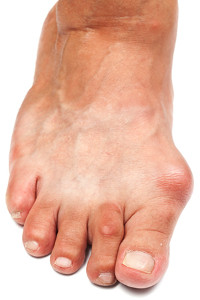 When it comes to surgery, podiatrists ensure that all nonsurgical options are exhausted first. A bunion is a bony bump that occurs on the joint at the base of the big toe and can be treated with nonsurgical means. Not all bunions are serious or produce symptoms; however, they can become worse over time without treatment. Treatment options that podiatrists typically consider include roomier and comfortable shoes, bunion pads, and anti-inflammatory medication. Better-fitted shoes will help prevent the bunion from pressing up against the inside of the shoe. Bunion pads also help prevent the bunion from becoming compressed. Anti-inflammatory medication can help reduce inflammation and pain. A cortisone shot may be recommended for longer-lasting relief. If these or other options do not produce results, and the pain is severe, a podiatrist may then recommend surgery to treat the bunion.
When it comes to surgery, podiatrists ensure that all nonsurgical options are exhausted first. A bunion is a bony bump that occurs on the joint at the base of the big toe and can be treated with nonsurgical means. Not all bunions are serious or produce symptoms; however, they can become worse over time without treatment. Treatment options that podiatrists typically consider include roomier and comfortable shoes, bunion pads, and anti-inflammatory medication. Better-fitted shoes will help prevent the bunion from pressing up against the inside of the shoe. Bunion pads also help prevent the bunion from becoming compressed. Anti-inflammatory medication can help reduce inflammation and pain. A cortisone shot may be recommended for longer-lasting relief. If these or other options do not produce results, and the pain is severe, a podiatrist may then recommend surgery to treat the bunion.
If you are suffering from bunions, contact Dr. James Kutchback of James Kutchback, DPM, ABLES, CWS-P. Our doctor can provide the care you need to keep you pain-free and on your feet.
What Is a Bunion?
A bunion is formed of swollen tissue or an enlargement of boney growth, usually located at the base joint of the toe that connects to the foot. The swelling occurs due to the bones in the big toe shifting inward, which impacts the other toes of the foot. This causes the area around the base of the big toe to become inflamed and painful.
Why Do Bunions Form?
Genetics – Susceptibility to bunions are often hereditary
Stress on the feet – Poorly fitted and uncomfortable footwear that places stress on feet, such as heels, can worsen existing bunions
How Are Bunions Diagnosed?
Doctors often perform two tests – blood tests and x-rays – when trying to diagnose bunions, especially in the early stages of development. Blood tests help determine if the foot pain is being caused by something else, such as arthritis, while x-rays provide a clear picture of your bone structure to your doctor.
How Are Bunions Treated?
- Refrain from wearing heels or similar shoes that cause discomfort
- Select wider shoes that can provide more comfort and reduce pain
- Anti-inflammatory and pain management drugs
- Orthotics or foot inserts
- Surgery
If you have any questions, please feel free to contact our offices located in The Woodlands and Woodville, TX . We offer the newest diagnostic and treatment technologies for all your foot care needs.
Read more about BunionsHow and Why Athletes Should Care for Their Feet
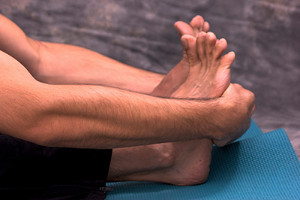 While we should all take care of our feet, those who are active should be more proactive when it comes to foot care. Athletes and physically active people generally subject their feet to more stress than an average person normally would. This can increase their risk for foot injury and ailments. Here are some tips that active people can follow to help prevent injury. Make sure to pick the right shoes for the right activity. If you run, running shoes are best; if you play tennis, go with tennis shoes. Picking a quality pair of moisture-wicking socks can also help prevent foot fungus by keeping the feet dry. Runners reportedly also often suffer from dry skin on their feet. To help prevent dry feet, use a good moisturizer. Washing them often is a good way to keep them hydrated while also helping to prevent foot and toenail fungus. If you workout, don’t forget to workout your feet. Strong feet will aid in preventing foot injuries. Upon completing a workout make sure to give your feet time to rest. Finally, if your feet hurt, stop exercising and avoid putting pressure on them. If the pain doesn't go away it is recommended to see a podiatrist.
While we should all take care of our feet, those who are active should be more proactive when it comes to foot care. Athletes and physically active people generally subject their feet to more stress than an average person normally would. This can increase their risk for foot injury and ailments. Here are some tips that active people can follow to help prevent injury. Make sure to pick the right shoes for the right activity. If you run, running shoes are best; if you play tennis, go with tennis shoes. Picking a quality pair of moisture-wicking socks can also help prevent foot fungus by keeping the feet dry. Runners reportedly also often suffer from dry skin on their feet. To help prevent dry feet, use a good moisturizer. Washing them often is a good way to keep them hydrated while also helping to prevent foot and toenail fungus. If you workout, don’t forget to workout your feet. Strong feet will aid in preventing foot injuries. Upon completing a workout make sure to give your feet time to rest. Finally, if your feet hurt, stop exercising and avoid putting pressure on them. If the pain doesn't go away it is recommended to see a podiatrist.
Everyday foot care is very important to prevent infection and other foot ailments. If you need your feet checked, contact Dr. James Kutchback from James Kutchback, DPM, ABLES, CWS-P. Our doctor can provide the care you need to keep you pain-free and on your feet.
Everyday Foot Care
Often, people take care of their bodies, face and hair more so than they do for their feet. But the feet are a very important aspect of our bodies, and one that we should pay more attention to. Without our feet, we would not be able to perform most daily tasks.
It is best to check your feet regularly to make sure there are no new bruises or cuts that you may not have noticed before. For dry feet, moisturizer can easily be a remedy and can be applied as often as necessary to the affected areas. Wearing shoes that fit well can also help you maintain good foot health, as well as making it easier to walk and do daily activities without the stress or pain of ill-fitting shoes, high heels, or even flip flops. Wearing clean socks with closed shoes is important to ensure that sweat and bacteria do not accumulate within the shoe. Clean socks help to prevent Athlete’s foot, fungi problems, bad odors, and can absorb sweat.
If you have any questions please feel free to contact our offices located in The Woodlands and Woodville, TX . We offer the newest diagnostic and treatment technologies for all your foot and ankle needs.
Read more about Every Day Foot CareWhat is Tarsal Tunnel Syndrome?
 Tarsal tunnel syndrome is a condition in which the posterior tibial nerve in the tarsal tunnel becomes pinched or compressed. This causes a number of symptoms including burning and shooting pain, a pins and needles sensation, numbness, and tightness in the foot. There are several reasons why the nerve could become compressed, which include bony prominences, bone spurs, abnormal heel position, and the swelling of tendons in the tarsal tunnel. Due to the nature of tarsal tunnel syndrome, diagnosis may be difficult because it can seem to mimic the symptoms of other conditions; heel pain and arch pain are some examples. It is best to see a podiatrist if you are experiencing any of those symptoms. Podiatrists can offer a number of treatments, such as orthotics, taping or bracing, rest, icing, anti-inflammatory medication, or even surgery if other treatments do not improve your condition.
Tarsal tunnel syndrome is a condition in which the posterior tibial nerve in the tarsal tunnel becomes pinched or compressed. This causes a number of symptoms including burning and shooting pain, a pins and needles sensation, numbness, and tightness in the foot. There are several reasons why the nerve could become compressed, which include bony prominences, bone spurs, abnormal heel position, and the swelling of tendons in the tarsal tunnel. Due to the nature of tarsal tunnel syndrome, diagnosis may be difficult because it can seem to mimic the symptoms of other conditions; heel pain and arch pain are some examples. It is best to see a podiatrist if you are experiencing any of those symptoms. Podiatrists can offer a number of treatments, such as orthotics, taping or bracing, rest, icing, anti-inflammatory medication, or even surgery if other treatments do not improve your condition.
Tarsal tunnel syndrome can be very uncomfortable to live with. If you are experiencing tarsal tunnel syndrome, contact Dr. James Kutchback of James Kutchback, DPM, ABLES, CWS-P. Our doctor can provide the care you need to keep you pain-free and on your feet.
Tarsal Tunnel Syndrome
Tarsal tunnel syndrome, which can also be called tibial nerve dysfunction, is an uncommon condition of misfiring peripheral nerves in the foot. The tibial nerve is the peripheral nerve in the leg responsible for sensation and movement of the foot and calf muscles. In tarsal tunnel syndrome, the tibial nerve is damaged, causing problems with movement and feeling in the foot of the affected leg.
Common Cause of Tarsal Tunnel Syndrome
- Involves pressure or an injury, direct pressure on the tibial nerve for an extended period of time, sometimes caused by other body structures close by or near the knee.
- Diseases that damage nerves, including diabetes, may cause tarsal tunnel syndrome.
- At times, tarsal tunnel syndrome can appear without an obvious cause in some cases.
The Effects of Tarsal Tunnel Syndrome
- Different sensations, an afflicted person may experience pain, tingling, burning or other unusual sensations in the foot of the affected leg.
- The foot muscles, toes and ankle become weaker, and curling your toes or flexing your foot can become difficult.
- If condition worsens, infections and ulcers may develop on the foot that is experiencing the syndrome.
A physical exam of the leg can help identify the presence of tarsal tunnel syndrome. Medical tests, such as a nerve biopsy, are also used to diagnose the condition. Patients may receive physical therapy and prescriptive medication. In extreme cases, some may require surgery.
If you have any questions please feel free to contact our offices located in The Woodlands and Woodville, TX . We offer the newest diagnostic and treatment technologies for all your foot and ankle needs.
Read more about Tarsal Tunnel SyndromeWhat to Look for and What Not to Look For in Running Shoes
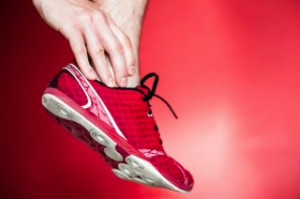 Running is a great way to stay healthy and fit, and an important aspect of running is proper footwear. Wearing the right type of footwear can help prevent injury and strain and provide a more enjoyable experience. If you are just starting out as a runner, don’t worry too much about buying expensive, high-end shoes. Instead, look for a pair that is medium-priced, provides comfort, and is roomy. When you wear a pair of shoes that do not provide a proper fit, you risk sustaining a number of injuries such as an ankle sprain or developing foot conditions such as corns, blisters, or plantar fasciitis. Furthermore, a bad pair of running shoes can make running uncomfortable and discourage you from doing it.
Running is a great way to stay healthy and fit, and an important aspect of running is proper footwear. Wearing the right type of footwear can help prevent injury and strain and provide a more enjoyable experience. If you are just starting out as a runner, don’t worry too much about buying expensive, high-end shoes. Instead, look for a pair that is medium-priced, provides comfort, and is roomy. When you wear a pair of shoes that do not provide a proper fit, you risk sustaining a number of injuries such as an ankle sprain or developing foot conditions such as corns, blisters, or plantar fasciitis. Furthermore, a bad pair of running shoes can make running uncomfortable and discourage you from doing it.
If you are a runner, wearing the right running shoe is essential. For more information, contact Dr. James Kutchback from James Kutchback, DPM, ABLES, CWS-P. Our doctor can provide the care you need to keep you pain-free and on your feet.
Choosing the Right Running Shoe for Your Foot Type
To increase performance and avoid the risk of injury, it is important to choose the right running shoe based on your foot type. The general design of running shoes revolves around pronation, which is how the ankle rolls from outside to inside when the foot strikes the ground.
- Neutral runners are able to choose from a wide variety of shoes, including minimalist shoes or even going barefoot.
- Runners who overpronate, or experience an over-abundance of ankle rolling, should choose shoes that provide extra motion control and stability.
- Runners who underpronate, or supinate, have feet that have high arches and lack flexibility, preventing shock absorption. They require shoes with more flexibility and cushion.
If you have any questions please feel free to contact our offices located in The Woodlands and Woodville, TX . We offer the newest diagnostic and treatment technologies for all your foot and ankle needs.
Read more about Choosing the Right Running Shoe for Your Foot TypeLebron James Still Out From Sprained Ankle
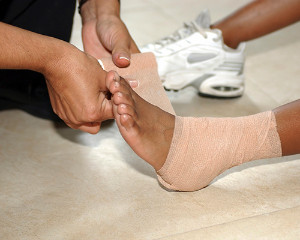 Cleveland Cavaliers small forward (SF) Lebron James recently sprained his left ankle in an unknown way. The injury has forced him to miss two practices so far. James’ condition is unknown, and it is also unknown how long he will be out. X-rays taken after the injury came back negative. Lebron James is a three-time NBA champion and a well-known player. Though his injury is unfortunate for the team, fortunately the Cavaliers recently gained a great player in Dwyane Wade.
Cleveland Cavaliers small forward (SF) Lebron James recently sprained his left ankle in an unknown way. The injury has forced him to miss two practices so far. James’ condition is unknown, and it is also unknown how long he will be out. X-rays taken after the injury came back negative. Lebron James is a three-time NBA champion and a well-known player. Though his injury is unfortunate for the team, fortunately the Cavaliers recently gained a great player in Dwyane Wade.
Sports related foot and ankle injuries require proper treatment before players can go back to their regular routines. For more information, contact Dr. James Kutchback of James Kutchback, DPM, ABLES, CWS-P. Our doctor can provide the care you need to keep you pain-free and on your feet.
Sports Related Foot and Ankle Injuries
Foot and ankle injuries are a common occurrence when it comes to athletes of any sport. While many athletes dismiss the initial aches and pains, the truth is that ignoring potential foot and ankle injuries can lead to serious problems. As athletes continue to place pressure and strain the area further, a mild injury can turn into something as serious as a rupture and may lead to a permanent disability. There are many factors that contribute to sports related foot and ankle injuries, which include failure to warm up properly, not providing support or wearing bad footwear. Common injuries and conditions athletes face, including:
- Plantar Fasciitis
- Plantar Fasciosis
- Achilles Tendinitis
- Achilles Tendon Rupture
- Ankle Sprains
Sports related injuries are commonly treated using the RICE method. This includes rest, applying ice to the injured area, compression and elevating the ankle. More serious sprains and injuries may require surgery, which could include arthroscopic and reconstructive surgery. Rehabilitation and therapy may also be required in order to get any recovering athlete to become fully functional again. Any unusual aches and pains an athlete sustains must be evaluated by a licensed, reputable medical professional.
If you have any questions please feel free to contact our offices located in The Woodlands and Woodville, TX . We offer the newest diagnostic and treatment technologies for all your foot and ankle needs.
How to Prevent Falls Among the Elderly
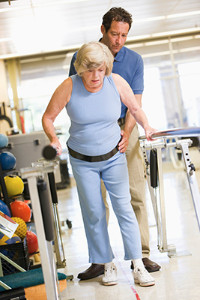 Elderly Americans are at an increased risk of falling than younger Americans. Falls are a leading cause of injury among the elderly, therefore it is important for older persons to know how to prevent them in the first place. Staying active through exercising is an excellent way to stay flexible, mobile, and strong. There are exercise groups all over the country that help older people stay in shape. Make sure to clear any debris from the floor that can make tripping more likely. Lighting is another important aspect in preventing falls in the home. Installing night lights that turn on automatically in and near the restroom can help prevent falls during late-night bathroom trips. Going to routine check-ups with a doctor is advised as well, and it is important to ask if any prescribed medications can cause drowsiness or lightheadedness. Finally, have one’s eyes and hearing checked regularly to help maintain alertness. Falls pose a unique risk to older citizens, and knowing how to prevent them can make all the difference.
Elderly Americans are at an increased risk of falling than younger Americans. Falls are a leading cause of injury among the elderly, therefore it is important for older persons to know how to prevent them in the first place. Staying active through exercising is an excellent way to stay flexible, mobile, and strong. There are exercise groups all over the country that help older people stay in shape. Make sure to clear any debris from the floor that can make tripping more likely. Lighting is another important aspect in preventing falls in the home. Installing night lights that turn on automatically in and near the restroom can help prevent falls during late-night bathroom trips. Going to routine check-ups with a doctor is advised as well, and it is important to ask if any prescribed medications can cause drowsiness or lightheadedness. Finally, have one’s eyes and hearing checked regularly to help maintain alertness. Falls pose a unique risk to older citizens, and knowing how to prevent them can make all the difference.
Preventing falls among the elderly is very important. If you are older and have fallen or fear that you are prone to falling, consult with Dr. James Kutchback from James Kutchback, DPM, ABLES, CWS-P. Our doctor will assess your condition and provide you with quality advice and care.
Every 11 seconds, an elderly American is being treated in an emergency room for a fall related injury. Falls are the leading cause of head and hip injuries for those 65 and older. Due to decreases in strength, balance, senses, and lack of awareness, elderly persons are very susceptible to falling. Thankfully, there are a number of things older persons can do to prevent falls.
How to Prevent Falls
Some effective methods that older persons can do to prevent falls include:
- Enrolling in strength and balance exercise program to increase balance and strength
- Periodically having your sight and hearing checked
- Discuss any medications you have with a doctor to see if it increases the risk of falling
- Clearing the house of falling hazards and installing devices like grab bars and railings
- Utilizing a walker or cane
- Wearing shoes that provide good support and cushioning
- Talking to family members about falling and increasing awareness
Falling can be a traumatic and embarrassing experience for elderly persons; this can make them less willing to leave the house, and less willing to talk to someone about their fears of falling. Doing such things, however, will increase the likelihood of tripping or losing one’s balance. Knowing the causes of falling and how to prevent them is the best way to mitigate the risk of serious injury.
If you have any questions, please feel free to contact our offices located in The Woodlands and Woodville, TX . We offer the newest diagnostic and treatment technologies for all your foot care needs.
What Do Podiatrists Do?
 Podiatrists are medical doctors who specialize in the foot and ankle. Officially known as a Doctor of Podiatric Medicine (DPM), podiatrists have the knowledge and ability to diagnose and treat any foot ailment. This includes minor ones such as toenail fungus, cracked heels, and heel pain, to more major problems such as an Achilles tendon rupture or a broken foot. They can also provide items such as custom-made orthotics to help give your feet proper support and keep them aligned. For those with diabetes, it is highly recommended to see a podiatrist. Diabetics generally have reduced blood flow and neuropathy in the foot, which in their worst cases can lead to infected ulcers and an increased risk of amputation. If you are experiencing any pain or have any foot abnormalities, it is important to see a podiatrist.
Podiatrists are medical doctors who specialize in the foot and ankle. Officially known as a Doctor of Podiatric Medicine (DPM), podiatrists have the knowledge and ability to diagnose and treat any foot ailment. This includes minor ones such as toenail fungus, cracked heels, and heel pain, to more major problems such as an Achilles tendon rupture or a broken foot. They can also provide items such as custom-made orthotics to help give your feet proper support and keep them aligned. For those with diabetes, it is highly recommended to see a podiatrist. Diabetics generally have reduced blood flow and neuropathy in the foot, which in their worst cases can lead to infected ulcers and an increased risk of amputation. If you are experiencing any pain or have any foot abnormalities, it is important to see a podiatrist.
If you are experiencing pain in the feet or ankles, don’t join the stubborn majority refusing treatment. Feel free to contact Dr. James Kutchback from James Kutchback, DPM, ABLES, CWS-P. Our doctor can provide the care you need to keep you pain-free and on your feet.
What Is a Podiatrist?
Someone would seek the care of a podiatrist if they have suffered a foot injury or have common foot ailments such as heal spurs, bunions, arch problems, deformities, ingrown toenails, corns, foot and ankle problems, etc.
Podiatric Treatment
A podiatrist will treat the problematic areas of the feet, ankle or lower leg by prescribing the following:
- Physical therapy
- Drugs
- Orthotic inserts or soles
- Surgery on lower extremity fractures
A common podiatric procedure a podiatrist will use is a scanner or force plate which will allow the podiatrist to know the designs of orthotics. Patients are then told to follow a series of tasks to complete the treatment. The computer will scan the foot a see which areas show weight distribution and pressure points. The podiatrist will read the analysis and then determine which treatment plans are available.
If you have any questions please feel free to contact our offices located in The Woodlands and Woodville, TX . We offer the newest diagnostic and treatment technologies for all your foot and ankle needs.



